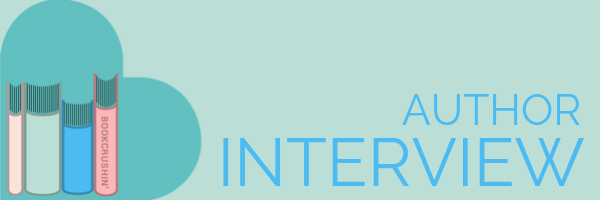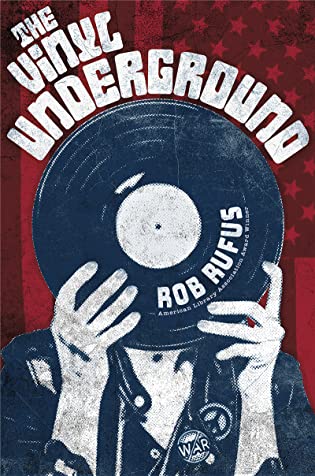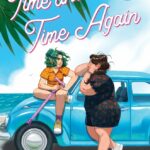
Author Interview: The Vinyl Underground by Rob Rufus
The Vinyl Underground is a little bit friendship, a little bit of history, and a whole lot of punk. Actually, it’s a whole lot of all of those things, and for that, I fell in love with it.
It’s so much music that Rob’s band even wrote a song for it.
We are here today talking to Rob about his inspiration, how music plays a role in the story, and how he created the rich setting within the story. Check it out!

The Vinyl Underground
by Rob RufusPublished by: Flux
on March 3, 2020
Genres: Historical Fiction, Young Adult
IndieBound
Goodreads
Dig it.
During the tumultuous year of 1968, four teens are drawn together: Ronnie Bingham, who is grieving his brother’s death in Vietnam; Milo, Ronnie’s bookish best friend; “Ramrod,” a star athlete who is secretly avoiding the draft; and Hana, the new girl, a half-Japanese badass rock-n-roller whose presence doesn’t sit well with their segregated high school.
The four outcasts find sanctuary in “The Vinyl Underground,” a record club where they spin music, joke, debate, and escape the stifling norms of their small southern town. But Ronnie’s eighteenth birthday is looming. Together, they hatch a plan to keep Ronnie from being drafted. But when a horrific act of racial-charged violence rocks the gang to their core, they decide it’s time for an epic act of rebellion.
Interview with Rob Rufus
When we met in person a few years back, you talked about starting this book but you weren’t sure yet where it was headed. Tell me about the inspiration to write this story. What elements did you feel were important to include?
Yes! The main inspiration for the story happened by chance. I bought a bunch of used vinyl, and in one of the record sleeves was a love letter that hadn’t been opened in forty years. It was between two high school sweethearts in the late sixties. I think music is such a connective thing, and to physically pair them up was really beautiful to me. That was around the time Trump came into power, and there was (and is) such a sense of tension in the country. It reminds me of the 1960’s protest era, only while they practiced active protest our generation mostly ops for passive protest (tweeting, etc.). So, I wanted to write something that highlighted those parallels and reminded young readers that they have the ability to have the courage of their convictions in real life, too.
Since this story is set in contemporary history, during a time that young adults may not be well versed in, what research did do to bring the setting and time period to life?
My dad is a Vietnam Vet, so all my life I’ve been interested in the time period. You’re right, young people aren’t very versed in it which is extremely fucking disturbing to me. Editors and publishers even told me it “wasn’t relevant to readers today.” That’s equally disturbing, since they are the gatekeepers and decide what is relevant or not. This is how history repeats itself, and all you have to do to see that is turn on the news.
But I digress, ha-ha. I did do a ton of research, it was really important to me to get the feel of the era right while also showing the similarities between then and now. I read a ton of books, interviewed people, watched documentaries, read old newspaper articles, went to exhibits, etc. I’ve talked to a few Vietnam Vets who told me I got it right on, so that makes me happy. The research could be emotionally exhausting, so I’m glad it was worth it.
Let’s talk about characters. The protagonists and antagonists reflect their unique time in the world. Which of them do you identify with and where did you drawn inspiration for them?
I identified most with Ronnie and his father. I was grieving from my own loss when I wrote the book, so it wasn’t hard to get in the headspace of a family that’s lost someone. It fucks you up, and makes the world seem upside down. I also put a lot of myself into Milo, his tenacity and obsession with movies and the small-man syndrome, ha-ha. Hana was inspired by someone who is equally as badass and aggressively smart, and I’m left in awe of her strength just as the boys are to Hana in the book.
The antagonists are based on every asshole I went to school with in small-town West Virginia. Some people find it distasteful that I wrote them (and their rhetoric) realistically, but I think it’s important to recognize there are hateful people in the world with those dark, sick ideas and feelings. I think sanitizing it benefits no one but the perpetrators. Why are we calling them “Alt-Right” now instead of “piece-of-shit-fascist-assholes?” Why are we as a society normalizing them? I’m not really sure. But in my books, that will never fucking happen. If it bothers people to read it . . . good. It should.
Music plays an important role in the story, and in your life. How did you choose the music you included in the book?
Picking the music for the book was one of the most enjoyable parts of writing it. For the broader scenes, like parties or listening to the radio, I chose songs that were on the charts in the period the book took place. Then, I specified different songs to different characters; things I think they would like as well as things that emoted what they were feeling with inside. Other songs, like “Eve of Destruction,” “We’ve Gotta Get Out of This Place,” and “Kick Out The Jams” were used to draw parallels between then and now and symbolize The Vinyl Underground’s journey from passive to active rebellion.
Listen to “Eve of Destruction” today. Its relevance is disturbing, to say the least.










